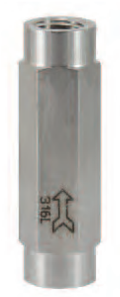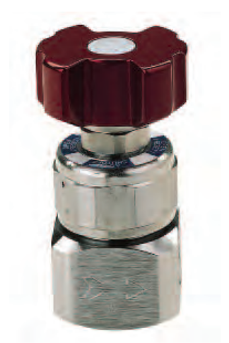Which Is Not Protection Again Poisonous Gases.
Risk Controls
The Risk Control Plan for your lab'south procedures involving hazardous gases volition detail specific engineering controls, work practices, or personal protective equipment that is required.
Some general guidance for hazardous gas apply is given below.
Engineering Controls
All components of a system connected to a compressed gas cylinder must be pressure-rated to withstand the maximum pressure capable of existence delivered by the cylinder or the maximum output pressure level of the regulator that is connected to the cylinder valve.
Fume hood
Piece of work with hazardous gases must be performed inside of a fume hood or with another ways of dedicated exhaust that has been reviewed and approved by EHRS.
Condom shielding
Prophylactic shielding is required whatsoever fourth dimension there is a hazard of explosion, splash hazard or a highly exothermic reaction. All manipulations of hazardous gases which pose this chance should occur in a smoke hood with the sash in the lowest feasible position.
Glove (dry) box
Some processes involving acutely toxic gases may exist performed in a properly vented glove box rather than a smoke hood.
Gas Alarms
Continuous-monitoring gas alert systems are required for some hazardous gases. EHRS will assess the need for gas monitoring equally role of the chance assessment that will exist washed before approving use of the hazardous gas.
Regulators
A two-stage regulator is a device that reduces the college pressure level in the gas cylinder to a lower working pressure. Two stage regulators control pressure in 2 steps allowing precise control of pressure.
A 2-stage regulator is required for dispensing gas from high-pressure gas cylinders. The regulator must exist compatible with the gas and with the intended utilise. The maximum pressure of the 2nd phase of the regulator should be as low as is practical for the intended experimental piece of work.
The Compressed Gas Clan (CGA) recommends that regulators be refurbished every 5 years.
Flow-command valves
A mechanical menstruum-control valve (needle valve) that is compatible and properly cleaned for the chancy gas must be attached directly to the gas outlet of the gas regulator. This is required even if other flow control devices are present in the experimental device. Menses command must not be attempted through use of the gas regulator or cylinder valve. A menstruum-control valve controls thecharge per unit of gas period (eastward.k. liters per minute), whereas a pressure regulator controls thegas pressure(e.one thousand. pounds per square inch).
Flow-restricting orifices
A flow-restricting orifice is a flow-limiting devices that restricts the maximum flow out of a compressed gas regulator. These devices are typically disquisitional orifices.
Where viable, flow restricting devices must be installed after the regulator. Select the appropriate flow restricting orifice based on gas used and the flow charge per unit required for the research. Your lab's chore-specific Run a risk Command Plan must specify whether a flow-restricting orifice is required for your chancy gas utilize.
Tubing and pipe
Hazardous gases must be dispensed using systems that are properly cleaned and compatible with the gas in employ. Flare-up pressure of tubing and piping must exceed the maximum pressure on the second stage regulator. Exceptions to this requirement may be fabricated for brusque sections of tubing when it, and the compressed gas cylinder, are completely enclosed in a fume hood and low pressures and catamenia rates are used. Tubing and piping used with flammable gases may not be combustible. Flexible piping must be kept as short as possible and should not exceed 5 feet.
Acetylene and ammonia cannot come in contact with "carmine metal" (copper content >65%). Stainless steel must be used for piping these gases and acetylene-specific regulators must be used
Purge assembly
A purge assembly is a valving system that permits the flushing of the regulator and commitment tubing with inert gas.
A purge assembly is required whenever a hazardous gas system is non completely housed within a ventilated enclosure. Purge assemblies must frazzle into a smoke hood or other approved frazzle system. Exceptions may be made for light amplification by stimulated emission of radiation systems that comprise small quantities of hazardous gas that volition be effectively filtered when exhausted. Exemptions must be approved by EHRS.
Check valve
A cheque valve maintains positive pressure in the line when you disconnect from the cylinder. This prevents gas from escaping the procedure line and prevents air from entering the process line.

Excess-menstruum valve
An excess-period valve is a mechanical device that detects excess flow, which would point a leak in the pipe, and shuts off the flow. There are two varieties: Ane that is re-settable afterward activation and i that requires a special cardinal to reset it after an incident. Backlog-menstruum valves more often than not aren't used with corrosive gases because they would become corroded. The valve should exist located in-line as close to the cylinder as possible.

Flame arrestors and flash-back arrestors
The following description is taken from TWI'south article What is a flame or Flashback Arrestor? (accessed 6/25/2021)
A flame or flashback arrestor is a safety device designed to stop a flame in its tracks. It is therefore used to prevent flashback into cylinders or pipework.
The flame arrestor unremarkably contains an element which may consist of narrow passages through a wire mesh or metal cream. When a flame enters the element, it is quickly cooled by the cold surface of the element and the flame is extinguished. The flame arrestor may contain a pressure or temperature actuated cut-off valve, and may then be known as a flashback arrestor.
Over-pressure protection
Engineering controls for over-pressure level protection include force per unit area-relief valves, rupture disks, hydrostatic head devices, and high-force per unit area shutdown devices.
Vacuum pumps
Hydrocarbon based vacuum pump oil is incompatible with strongly oxidizing and many reactive gases. New vacuum pumps that take inert lubricants such equally DuPont Krytox and never contained oil-based lubricants must be used with oxidizing and reactive gases. Vacuum pumps must be securely vented to a smoke hood or other approved exhaust system with tubing that is uniform with the gases used. Frazzle lines must exist as short as feasible. Vented enclosures may be required for vacuum pumps depending on the toxicity of the gases used.
Work Practices
A list of recommended piece of work practices for hazardous chemic handling is included in Department Five: Chemical Handling in this CHP.
Piece of work Exercise guidance for compressed gases is given in SOP: Compressed Gases. All requirements for storage, transport, and securing of gas cylinders use to hazardous gases.
Specific Work Practices for Hazardous Gases
Additional work practices for reducing the risks of any lab procedure involving hazardous gasesmust be described in a written Hazard Command Programme.
Authoritative controls (work practices) are not sufficient controls for preventing explosive and incompatible gas mixtures in manifolded systems. Applied science controls and proper apparatus pattern must be used to preclude mixing of incompatible gases within the system.
Considerations for purchase
Purchase the smallest volume of hazardous gas needed for near-term research needs (approximately three months). While the initial purchase cost per cubic foot may be lower when hazardous gases are purchased in full sized cylinders, the overall cost of experimental setup (which may require local ventilation, gas cabinets, stainless steel piping and purging systems) may offset the apparent saving from buying hazardous gases in full sized cylinders.
Hazardous gases that are used in low concentrations (mixed with inert gases) must be purchased as pre-mixed whenever possible.
Mixtures of flammable and oxidizing gases may not be purchased and must non exist mixed in process. If mixing of combustible and oxidizing gases is required for your research, contact EHRS, See this Safety Alarm for more information about this run a risk.
Connections
CGA fittings must be compatible with the gas. Practise not use adapters or modify regulator or connectors.
Left-handed or "reversed" tread connections are used with flammables, corrosives, and air.
Right-handed thread connections are used with toxic gases.
Minimize the number of connections between the regulator outlet and the point of use.
Teflon record must non be used with Swagelock or CGA fittings.
Gaskets are usually used in CGA connections with corrosive gases. The gasket must be changed at to the lowest degree once every 3 cylinder changes. The gaskets are required to create a gas-tight seal. Information technology's important to have extra gaskets bachelor in the lab.
Leak testing
Hazardous gas systems must exist leak tested using inert gas and leak detection solutions such as Snoop(TM) before use.
Gas trapping and Scrubbing
To forbid environmental pollution and impairment to equipment it may be necessary to trap and or scrub frazzle from processes which utilise corrosive gases even when working in the fume hood. Contact EHRS for help with pattern and set-up of gas neutralization processes.
When corrosive gases are to be discharged into a liquid, a trap, bank check valve, or vacuum break device must be employed to prevent unsafe reverse flow.
Purging
Regulators and valves must exist closed when the cylinder is not in use and flushed with dry air or nitrogen after utilize.
All piping and tubing must be flushed with inert gas after process is consummate and earlier opening any component of the system to ambient air.
Piece of work practices for installing regulators
- First, tighten the regulator connection to the cylinder by hand, then use a 1.25" open up wrench to turn the connecting nut near xxx degrees.
- Close the flow command valve
- Open the cylinder valve completely to ensure it seals at the top of the valve
Personal Protective Equipment
Consider the potential routes of exposure and health consequences when selecting personal protective equipment (PPE) for tasks involving hazardous gases.
In addition to the minimum lab wearing apparel and PPE requirements, other protective equipment may be necessary to reduce risks. When additional equipment (such as tight-fitting chemical splash goggles, chemic-resistant gloves, or disposable lab coats) are required, a Hazard Control Plan must be written to document the gamble assessment and controls.
Contact EHRS for help with gamble assessments, glove compatibility, and other PPE pick.
The minimum PPE requirements for all chemic handling tasks, and data about specialty PPE can be institute in the "Personal Protective Equipment" section of Section V: Chemical Handling in this CHP.
Source: https://ehrs.upenn.edu/health-safety/lab-safety/chemical-hygiene-plan/standard-operating-procedures/sop-hazardous-and
0 Response to "Which Is Not Protection Again Poisonous Gases."
Postar um comentário